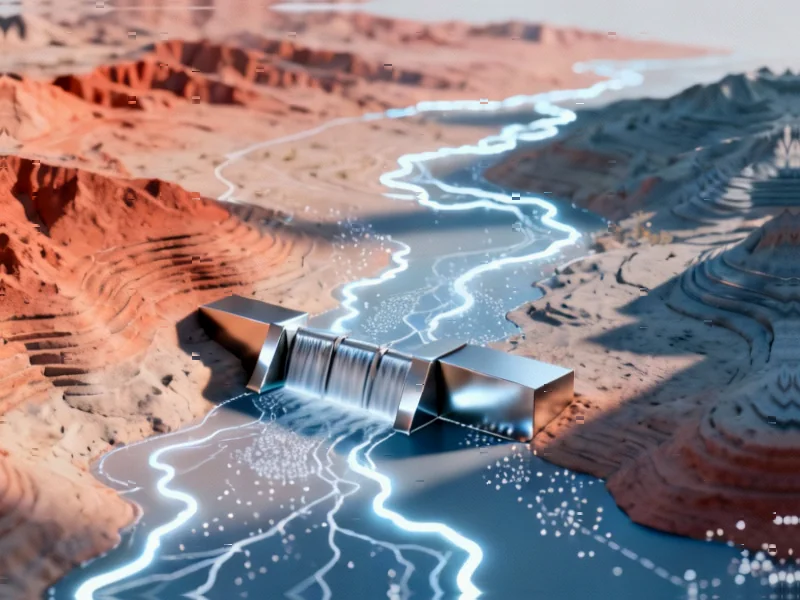Environmental Concerns Mount Over Deep-Sea Mining Operations
As global demand for critical minerals intensifies during the clean energy transition, attention is turning to the ocean depths where vast mineral deposits await extraction. However, analysts suggest the environmental costs of deep-sea mining may outweigh the benefits, according to recent scientific assessments.
Table of Contents
Growing Pressure for Critical Minerals
The production of critical minerals needs to increase sixfold to achieve net zero emissions by 2050, according to United Nations reports. Sources indicate these minerals, particularly polymetallic nodules containing cobalt, nickel and other essential elements, are abundant on the ocean floor in international waters.
Industry interest has intensified in regions like the Clarion-Clipperton Zone between Hawaii and Mexico, where despite scientists discovering 5,000 new species in 2023, commercial mining operations are being considered. The report states that large support vessels would deploy massive collectors to extract mineral deposits from seabeds up to 6,000 meters deep.
Irreversible Environmental Damage Documented
Scientific studies conducted over decades reveal alarming patterns of environmental destruction. In the late 1980s, researchers simulated mining operations in the Peru Basin by removing nodules from an 11-square-kilometer area. According to their findings, the ecosystem showed minimal recovery after seven years, and follow-up research 26 years later still found visible mining scars with the environment not fully restored.
Analysts suggest the removal of polymetallic nodules—which serve as essential habitat for deep-sea species—could cause ecosystem collapse. The mining process involves sucking up nodules, sediment and marine life through large pipes to surface ships, then pumping unwanted material back into the ocean, creating sediment plumes that can drift across vast areas.
Multiple Environmental Threats Identified
Research indicates deep-sea mining could cause long-lasting damage to marine biodiversity and potentially impact climate regulation. Studies show the sediment plumes from mining operations could smother delicate deep-sea organisms and disrupt food chains in one of Earth’s least understood environments.
Additionally, analysts suggest noise pollution from mining equipment could travel hundreds of miles through water, potentially affecting marine mammals and other species. The cumulative impacts of these operations remain poorly understood, though early warnings from scientific communities highlight potentially catastrophic consequences.
Scientific Exploration Intensifies Amid Regulatory Debates
As commercial interest grows, scientific exploration of deep-sea environments has accelerated. Researchers are mapping and studying ocean floors in unprecedented detail, discovering new species and unique ecosystems that depend on mineral nodules for survival., according to emerging trends
According to reports, these discoveries include dark oxygen systems, previously unknown octopus species that use manganese nodules as breeding grounds, and ancient underwater volcanoes covered in thousands of eggs. Scientists argue these findings underscore the importance of precautionary approaches to deep-sea mining regulation.
Balancing Clean Energy Needs with Ocean Protection
The debate continues as calls for clean energy amplify worldwide. While deep-sea mining could provide resources needed for sustainable technologies, analysts suggest it might destroy fragile ecosystems that have taken millennia to develop. The international community faces difficult decisions about whether the benefits of accessing these minerals outweigh the potentially permanent environmental costs.
Research organizations and environmental groups are calling for comprehensive environmental impact assessments and the development of alternative mineral sources before proceeding with commercial-scale deep-sea mining operations. According to their analysis, the true cost of deep-sea mining may be higher than initially projected when long-term environmental consequences are fully accounted for.
Related Articles You May Find Interesting
- Advanced Machine Learning Models Revolutionize Sustainable Concrete Performance
- Texas Instruments Stock Faces Valuation Concerns Amid Market Volatility
- 3D-Printed Titanium Implants Show Higher Corrosion Rates in Lattice Structures,
- AI Titans and App Developers: The Emerging Battle for Generative AI Dominance
- Private Sector Investment Key to Revitalizing South Africa’s Transport Infrastru
References
- https://www.iea.org/…/mineral-requirements-for-clean-energy-transitions
- https://time.com/7287891/deep-sea-mining-economics-dont-add-up/
- https://www.unep-wcmc.org/en/news/the-green-energy-transition-and-mining
- https://www.csiro.au/en/news/All/Articles/2025/July/Science-helps-deep-sea-mi…
- https://www.sciencedirect.com/science/article/abs/pii/S0967064501000698
- https://www.soest.hawaii.edu/…/
- https://www.iucn.nl/…/
- https://www.curtin.edu.au/…/
- https://www.sciencedirect.com/science/article/pii/S0308597X18306407
- https://www.earth.com/…/
- https://www.cell.com/current-biology/fulltext/S0960-9822(23)00534-1
- https://particle.scitech.org.au/
- http://en.wikipedia.org/wiki/Deep_sea_mining
- http://en.wikipedia.org/wiki/Seabed
- http://en.wikipedia.org/wiki/Mineral
This article aggregates information from publicly available sources. All trademarks and copyrights belong to their respective owners.
Note: Featured image is for illustrative purposes only and does not represent any specific product, service, or entity mentioned in this article.



